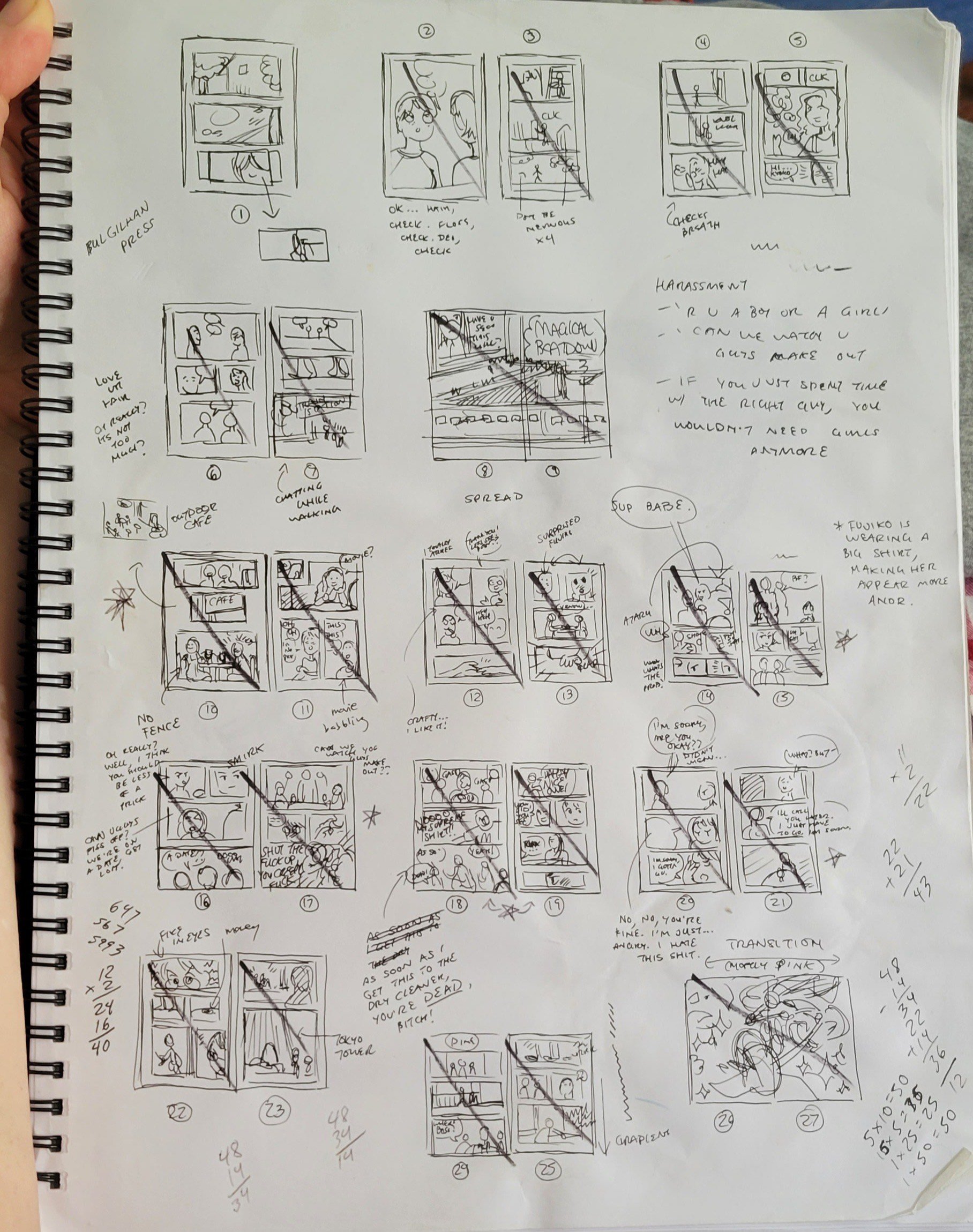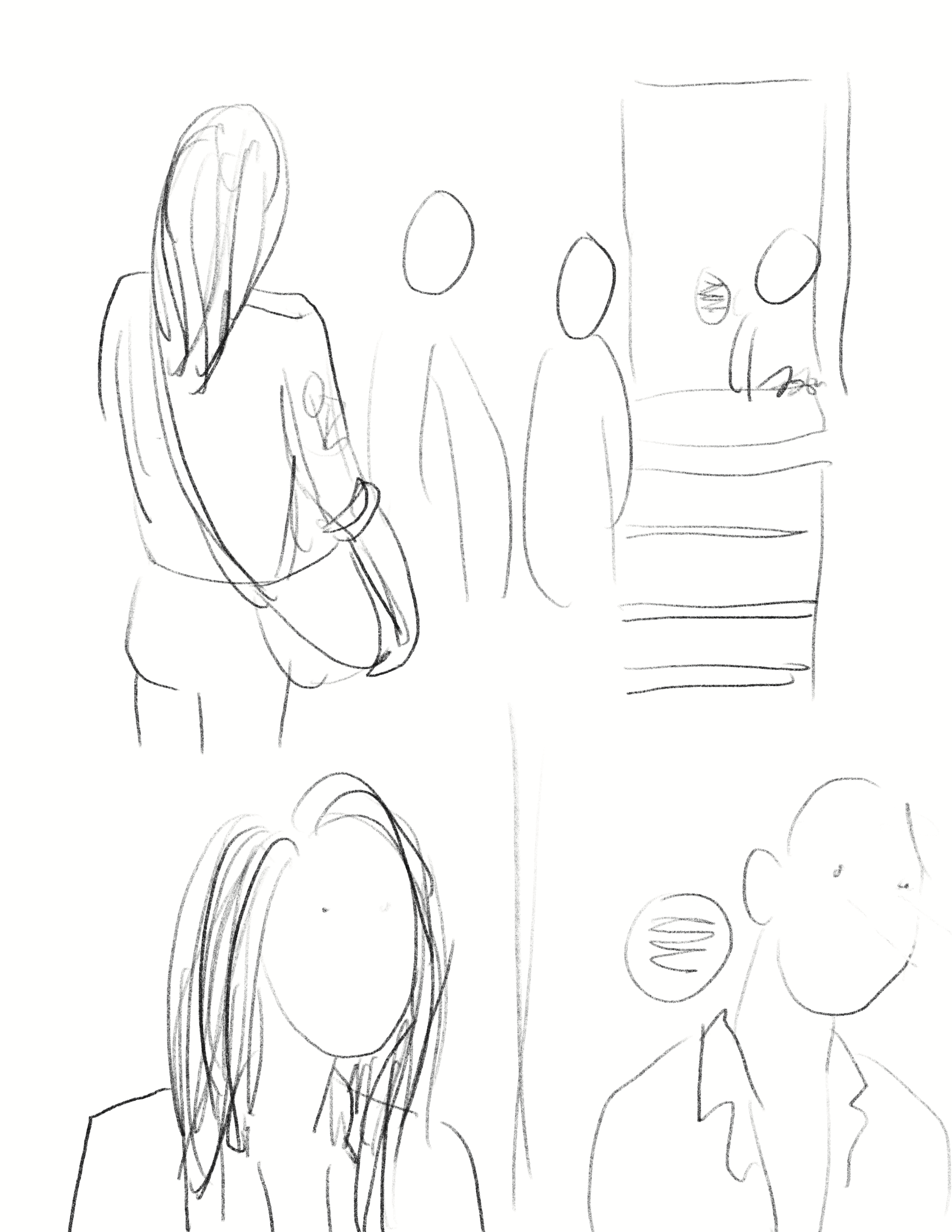Zero Draft Examples
To provide some examples for you, I asked a few comics friends to share some of their rough work.
Many of us do zero drafting at the thumbnail stage (a small version of pages in sequence all drawn together to see the full story, or chapter), like brilliant artists Jenn Woodall and Sam Sharpe:
Jenn Woodall’s page shows several small rectangles that are taller than they are wide, and each one is split vertically in half by a line. Inside the bounds of these rectangles, each half has tiny drawings of panels and figures inside, all very loose and sketchy. Outside the bounds of the rectangles are page numbers, and notes to the artist from herself, including dialogue, colour notes, and arrows showing actions and transitions.
Sam Sharpe’s two-page spread of a zero draft shows small sketches of figures, with rough gestures in their body language and facial expressions, text written in the space all around the figures. Many parts of the drawings and text are scratched out, and revised, and some of this writing is dialogue, while some is notes to the artist.
And sometimes thumbnails give us a starting point for the zero draft of our final drawings, too! Comics artist Archie Bongiovanni has shared a full page zero draft with us, and I myself have included thumbnails AND my zero draft sketches for two full pages at size.
Archie Bongiovanni’s zero draft page is one full page, rather than many pages drawn as rectangles in a row. There are three vertical panels drawn in the top third of the page, then a dark word balloon in the center, leading to one large panel taking up the bottom two thirds of the page. The drawings are all very loose and sketchy, the lines sometimes doubled where the artist went over a line more than once, and many lines do not connect.
Georgia’s thumbnail zero draft is on a piece of paper completely covered in grey pencil smudges. There are a series of small rectangles that are taller than they are wide, and they are divided vertically by a line down the center into two halves. Each half represents a page, and on each page there is a very loose scribble representing the drawing that will go there. There is writing scribbled all around the outside of these boxes with arrows pointing towards the page to which the writing applies. These are notes about what may be present on the page despite not being drawn there. Examples of these notes are sounds, actions, and words to be included.
Georgia’ full page zero draft 1 includes three panels without borders, two drawings on the top half of the page and one large one on the bottom half. The lines are sketchy and loose with lots of space around them. There is no detail. Only loose shapes of human figures in different positions and with the focus on their faces or the larger scene. There are no words.
Georgia’s zero draft page 2 is also three panels on the page without borders between them. The top two panels take up the top half of the page with one large panel occupying the bottom half. The top left drawing shows the quick action of a woman getting up from a desk where light is emanating from a computer screen, shown with big scratchy spikes around the screen. The second panel shows a loose sketch of the same woman brushing her teeth with a loose face sketch of concern. The last panel is a drawing of a body shape tumbling into bed head first, squiggles representing the pillows and blanket below the figure. There are no words.
I hope these examples help you to lock in on the level of MESS and SPEED and EXPERIMENT that we are engaging in just to get the ideas out, onto the page. When we come back to these drawings later, we will feel the ease of not starting from nothing — and we’ll set about improving on our initial ideas.
Try some zero draft style drawings yourself, and find out how it feels!






